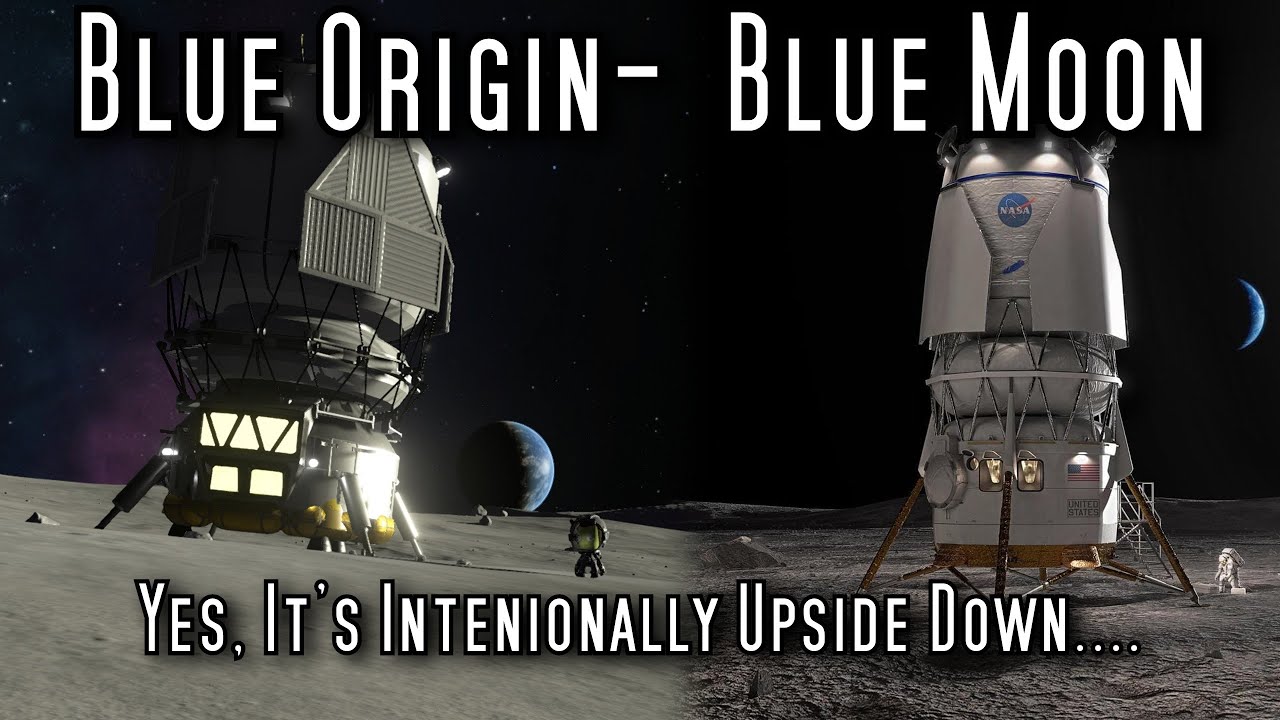One interesting aspect of the Blue Origin team’s selection as the second source for NASA’s Project Artemis Human Lunar Landing System is that now both of the funded systems, SpaceX’s Lunar Starship and Blue Origin’s Blue Moon, can, because of their size and mass, be launched only on boosters which have never flown to orbit (SpaceX’s Starship/Super Heavy and Blue Origin’s New Glenn), and both require re-fueling in space with transfer of cryogenic propellants, which has never been demonstrated in space.
Scott Manley’s model of the Blue Origin lander is based almost entirely on the one artist’s rendering shown at the announcement of the contract award which did not show details such as the number and location of engines, solar panels, and refueling system. The Blue Origin lander mission plan requires refueling at the Lunar Gateway by a tanker spacecraft to be developed by team member Lockheed Martin.
I suspect that the title card’s “Intenionally” was unintentionally misspelled.
